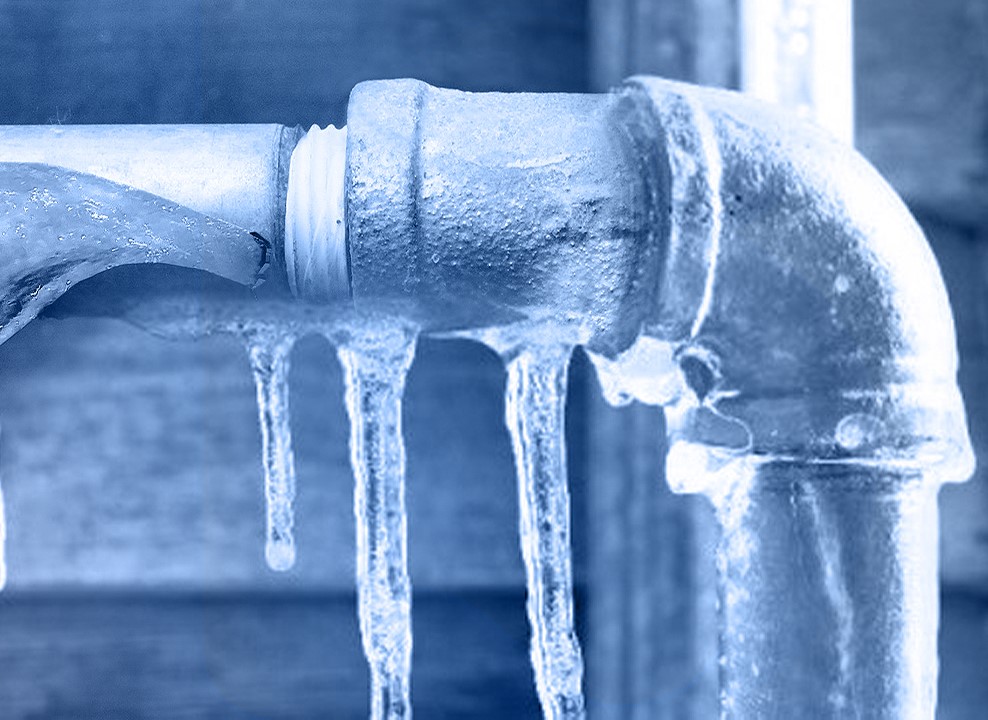Key Methods for Avoiding Frozen Pipes in Cold Weather
Key Methods for Avoiding Frozen Pipes in Cold Weather
Blog Article
We have come across this article involving Prevent Frozen Pipes listed below on the web and felt it made sense to relate it with you on my blog.

Cold weather can wreak havoc on your pipes, particularly by freezing pipelines. Below's exactly how to avoid it from taking place and what to do if it does.
Intro
As temperatures drop, the threat of frozen pipes rises, potentially leading to expensive repairs and water damages. Understanding just how to prevent icy pipes is critical for property owners in cool climates.
Avoidance Tips
Insulating vulnerable pipes
Cover pipelines in insulation sleeves or use warm tape to shield them from freezing temperatures. Focus on pipelines in unheated or external areas of the home.
Heating strategies
Keep interior areas appropriately heated, especially areas with plumbing. Open cabinet doors to enable warm air to circulate around pipelines under sinks.
Just how to recognize icy pipes
Try to find reduced water flow from faucets, unusual smells or sounds from pipelines, and visible frost on exposed pipes.
Long-Term Solutions
Structural changes
Take into consideration rerouting pipelines away from outside wall surfaces or unheated areas. Add added insulation to attics, basements, and crawl spaces.
Updating insulation
Purchase high-grade insulation for pipes, attics, and wall surfaces. Proper insulation aids preserve consistent temperature levels and reduces the threat of frozen pipelines.
Securing Outdoor Plumbing
Yard hose pipes and outdoor faucets
Separate and drain yard hoses before winter season. Install frost-proof spigots or cover exterior taps with protected caps.
Understanding Icy Pipelines
What triggers pipelines to ice up?
Pipes ice up when exposed to temperature levels below 32 ° F (0 ° C) for prolonged durations. As water inside the pipelines freezes, it expands, putting pressure on the pipeline wall surfaces and possibly causing them to burst.
Dangers and problems
Icy pipelines can bring about water supply disruptions, property damage, and expensive repairs. Ruptured pipelines can flood homes and trigger comprehensive structural damage.
Signs of Frozen Piping
Recognizing icy pipes early can prevent them from rupturing.
What to Do If Your Pipes Freeze
Immediate actions to take
If you believe icy pipes, maintain faucets open to soothe stress as the ice melts. Make use of a hairdryer or towels soaked in warm water to thaw pipelines gradually.
Conclusion
Stopping frozen pipelines requires aggressive measures and fast responses. By comprehending the causes, indications, and safety nets, house owners can secure their pipes during winter.
5 Ways to Prevent Frozen Pipes
Drain Outdoor Faucets and Disconnect Hoses
First, close the shut-off valve that controls the flow of water in the pipe to your outdoor faucet. Then, head outside to disconnect and drain your hose and open the outdoor faucet to allow the water to completely drain out of the line. Turn off the faucet when done. Finally, head back to the shut-off valve and drain the remaining water inside the pipe into a bucket or container. Additionally, if you have a home irrigation system, you should consider hiring an expert to clear the system of water each year.
Insulate Pipes
One of the best and most cost-effective methods for preventing frozen water pipes is to wrap your pipes with insulation. This is especially important for areas in your home that aren’t exposed to heat, such as an attic. We suggest using foam sleeves, which can typically be found at your local hardware store.
Keep Heat Running at 65
Your pipes are located inside your walls, and the temperature there is much colder than the rest of the house. To prevent your pipes from freezing, The Insurance Information Institute suggests that you keep your home heated to at least 65 degrees, even when traveling. You may want to invest in smart devices that can keep an eye on the temperature in your home while you’re away.
Leave Water Dripping
Moving water — even a small trickle — can prevent ice from forming inside your pipes. When freezing temps are imminent, start a drip of water from all faucets that serve exposed pipes. Leaving a few faucets running will also help relieve pressure inside the pipes and help prevent a rupture if the water inside freezes.
Open Cupboard Doors
Warm your kitchen and bathroom pipes by opening cupboards and vanities. You should also leave your interior doors ajar to help warm air circulate evenly throughout your home.

As a keen person who reads on Prevent Frozen Pipes , I think sharing that blog post was appropriate. Those who enjoyed our blog post if you please don't forget to share it. Thanks for being here. Come back soon.
Click Here Report this page